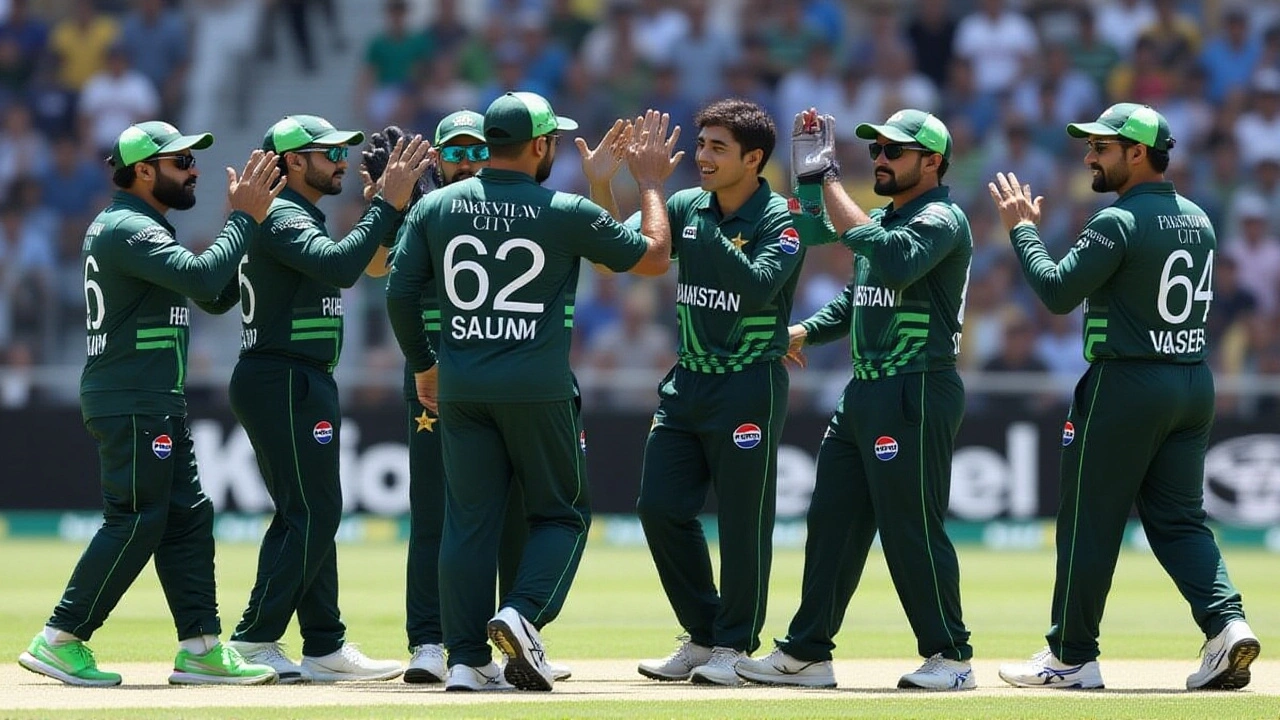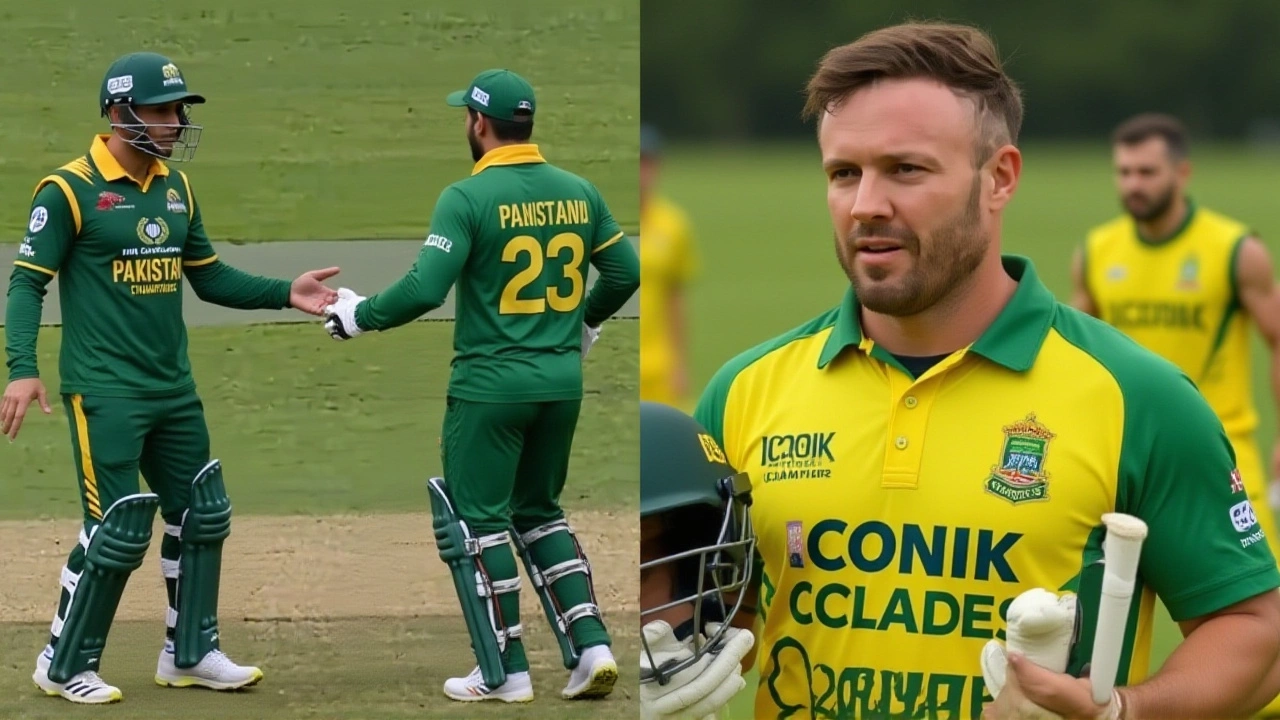On Saturday, August 2, 2025, the Dusta Properties World Championship of Legends 2025Edgbaston Stadium in Birmingham witnessed a historic finale as South Africa Champions clinched their maiden title, defeating Pakistan Champions by nine wickets. The match turned into a showcase of sheer power when AB de Villiers hammered an unbeaten 120 off just 60 deliveries, steering his side to a 197‑1 chase with 3.1 overs to spare.
The toss, won by Pakistan’s captain Mohammad Hafeez, sent the visitors into the field first. Opting to set a target on a slightly worn pitch, they hoped the early moisture would hamper the South African batters. Opening the innings, Sharjeel Khan provided the spark, smashing 76 runs from 48 balls before being caught at mid‑wicket. Pakistan posted 195 for 5, a respectable total but shy of the 200‑run benchmark that usually wins T20 finals.
South Africa’s bowlers answered in kind. Wayne Parnell claimed two early wickets for just 32 runs, while Hardus Viljoen added another duo, finishing with figures of 2 for 38. Their disciplined line and length kept the Pakistani scoring rate under 7 runs per over, setting the stage for a chase that never really got going.
Tournament Overview
The Dusta Properties World Championship of Legends brings together six former international stars, each representing a nation’s "Legends" squad. Over 15 days and 17 matches, the teams squabble in a round‑robin format before the top two meet in the final. This year’s edition saw a surprise twist when India Champions walked out of a scheduled semi‑final against Pakistan, citing political sensitivities. The forfeit gave Pakistan a direct ticket to the grand final, a decision that sparked debate across cricketing circles.
South Africa, on the other hand, earned their berth the hard way. After a tight group stage, they faced a nail‑biting semi‑final against the host nation, England Legends, and won by four wickets in a last‑over thriller. The victory cemented their reputation as the tournament’s most consistent side, with veteran performances from Hashim Amla and Jacques Kallis anchoring the middle order.
- Six teams competed: South Africa, Pakistan, India, England, Australia, and West Indies Legends.
- Match format: Twenty‑over (T20) games, single‑elimination after round‑robin.
- Top run‑scorer of the tournament: AB de Villiers (310 runs).
- Leading wicket‑taker: Wayne Parnell (12 wickets).
- Total viewership: approx. 2.3 million streams across FanCode, TrillerTV, and YouTube.
The Final Match: How South Africa Dominated
When the final began at 9:00 PM BST, the stadium buzzed with a mixture of anticipation and nerves. Pakistan’s innings got off to a solid start, with Sharjeel Khan and Kamran Akmal stitching together a 45‑run partnership. However, the turning point arrived in the 6th over when Parnell bowled a yorker that clean‑bowled Khan, triggering a collapse that saw three wickets fall for just 12 runs.
With the scoreboard reading 98 for 3, Pakistan’s chase stalled. Hafeez tried to steady the ship, but a mistimed pull against Viljoen resulted in a caught‑behind dismissal. The required run rate crept above 9 per over, and the pressure mounted.
Enter AB de Villiers. Walking in at 99 for 4, he faced his first ball and lofted a six over long‑on. From there, he was in a league of his own – a blend of power hitting and audacious sweep shots. By the 12th over, he was on 84, and the required run rate had shrunk to a manageable 6.5. The final over saw de Villiers launch three consecutive boundaries, sealing the victory with a six that sent the crowd into a roar.
Star Performances and Statistics
De Villiers' knock was the talk of the night: 120 runs off just 60 balls, a strike rate of 200, featuring 14 fours and 6 sixes. He reached his century in 43 deliveries, the fastest in WCL final history. His innings not only earned him the Player of the Match award but also etched his name alongside legends like Chris Gayle and Brendon McCullum.
On the bowling side, Parnell’s disciplined spell earned him the Player of the Series honor. He bowled a total of 42 overs in the tournament, conceding only 198 runs while picking up 12 wickets – an economy of 4.71. Viljoen’s variations on the slower ball baffled the Pakistani batsmen, especially in the death overs where he claimed the key wicket of Hafeez.
For Pakistan, Sharjeel Khan’s 76 was the lone silver lining. He struck at a healthy 158.33 strike rate, but lacked support from the other end. The team’s fielding also slipped, with two dropped catches that could have turned the tide.
Reactions from Players and Analysts
"We knew AB could take the game away from us, but seeing him do it in a final is something special," said Mohammad Hafeez in the post‑match press conference. "Our bowlers gave us a chance, but we didn't capitalize. Credit to South Africa for playing the big moments better."
De Villiers, ever the humble hero, reflected, "This win is for the whole squad. We worked day in, day out, and the plan clicked at the right time. It feels great to bring this trophy home for South Africa."
Cricket analyst Ravi Shastri noted, "The WCL is unique because it pits seasoned veterans against each other. South Africa's balance of power hitting and disciplined bowling gave them the edge. Pakistan will need to rethink their finish strategies if they want to get over the line next time."

Implications for South African and Pakistani Cricket
The triumph adds a feather in the cap of South African cricket’s revival narrative. While the senior national side continues to chase consistency, the Legends victory showcases the depth of talent still residing in the country. Young aspirants now have fresh role models, and the South African board is likely to leverage this success in promotional campaigns and grassroots programs.
Pakistan, meanwhile, faces a familiar heartbreak – two consecutive final defeats. The management has already hinted at a review of batting strategies during the death overs, and there is talk of integrating more aggressive bowlers for future editions. The disappointment, however, is softened by the fact that the team topped the group stage, indicating that the core remains strong.
Both teams will also reap commercial benefits. Sponsorship interest surged after the final, with Dusta Properties confirming a 20% increase in brand visibility metrics compared to the previous year. Streaming platforms reported a spike in viewership from the Indian sub‑continent, confirming the tournament’s growing global appeal.
What’s Next for the World Championship of Legends?
Organizers have already hinted at expanding the roster to eight teams for the 2026 edition, potentially inviting associate nations to broaden the competitive field. Discussions are also underway about introducing a women’s Legends tournament, a move that could unlock new audiences and revenue streams.
Until then, fans will replay de Villiers’ century on highlight reels, and cricket boards will study the tactical lessons from a match that proved legends can still write history.
Frequently Asked Questions
How does this victory affect South Africa’s senior national team?
The win bolsters confidence across the South African cricketing community. While the Legends squad is separate from the current Test and ODI sides, the performance showcases the depth of talent and may influence selectors to give more opportunities to emerging players who idolise the veterans.
What led to Pakistan’s back‑to‑back final losses?
Analysts point to a combination of middle‑order fragility and sub‑optimal death‑over tactics. In both finals, Pakistan’s chase stalled after the top order’s contributions, and the inability to accelerate safely handed the momentum back to the opposition.
Who were the top run‑scorers of the tournament?
AB de Villiers led with 310 runs, followed by Sharjeel Khan (274) and Hashim Amla (258). De Villiers’ average of 77.5 and a strike rate of 200 made his tally stand out.
When and where can fans watch the next WCL?
The 2026 edition is slated for June‑July 2026, with Dubai International Cricket Stadium confirmed as the primary venue. Exact dates will be announced by Dusta Properties later this year.
How did the viewership numbers compare to the previous year?
Streaming platforms reported a 15% rise in total viewers, hitting roughly 2.3 million streams worldwide. The surge was driven largely by heightened interest in AB de Villiers’ participation and expanded coverage on FanCode and TrillerTV.





